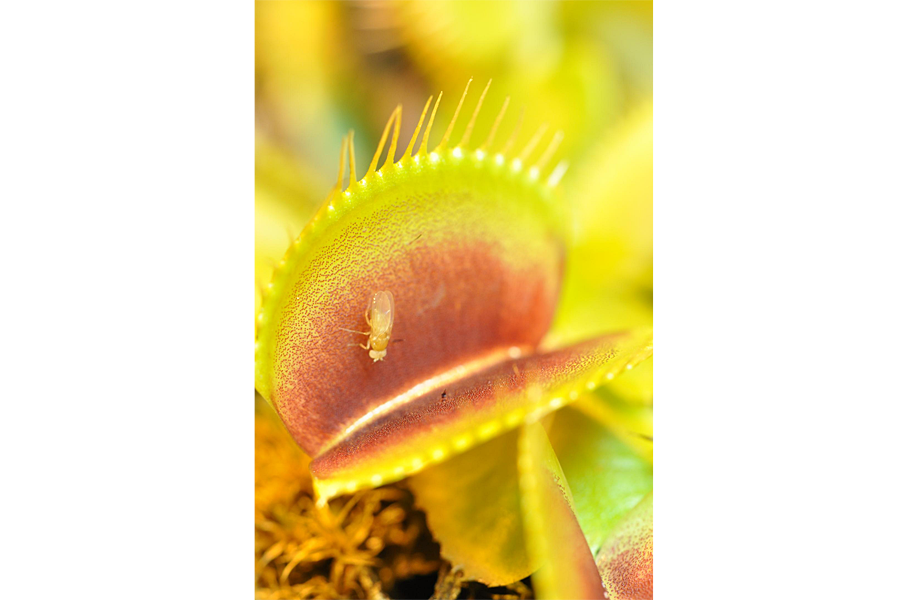Venus flytrap's meat-hunting secret? The little plant can count.
Loading...
Venus flytraps are probably the most famous plants that hunt. They lure insects with sweet nectar but, as the unsuspecting bugs move around the plant's open trap, they brush up against sensitive trigger hairs and....
Snap! The trap slams shut, ensnaring a tasty morsel.
But how does a plant know? It turns out that the key to this sequence of events, and the digestive process that follows, is the carnivorous plant's ability to count.
Venus flytraps actually count how many times a bug brushes against the trigger hairs scattered across the inside of the plant's traps. The number of times these stiff filaments are bumped dictates how the plant traps and consumes its meal, according to a new study published Thursday in the journal Current Biology.
It goes something like this:
A foraging bug – despite their name, Venus flytraps subsist mainly on ants, spiders, beetles, and grasshoppers, and not so much on flying insects – finds itself on the open trap of the waiting plant. As it ambles around gathering juicy nectar, it probably has no idea it's navigating a sort of minefield.
The first time the bug brushes against one of the sensitive trigger hairs, an electrochemical impulse travels through the plant, alerting the hungry plant of prey.
Nothing appears to happen with the first contact. But inside, the plant is primed to attack. The plant waits for more movement in the next 20 seconds to prove prey is really present and it's not just a raindrop or other false alarm.
As the bug continues to bumble around, it touches a trigger hair a second time. That second brush sets off the iconic snap of the trap. The bug is stuck.
Any trapped prey is bound to panic as soon as it realizes its fate. But as the bug struggles, it will continue to rub up against the sensitive trigger hairs. Each subsequent touch makes the plant more excited to eat its new snack.
When the bug is first taken captive, this stimulates the plant to produce jasmonate, a hormone that preps the plant for the digestive process. In non-carnivorous plants, jasmonate is a touch hormone released when the plant is damaged to help repair the wound.
The fifth time the struggling bug taps a trigger hair on its new Venus flytrap jail, the plant starts making digestive enzymes. Those enzymes ooze from the inside surface of the trap, activating the plant's stomach, as the researchers call the green trap.
As the fly continues to flail, each additional touch to the sensors initiates more production of the jasmonate and digestive enzymes.
Why does counting still matter after the fly is trapped? Those additional movements tell the plant something about the prey they have captured and what nutrients they might be able to gain.
Venus flytraps, Dionaea muscipula, are carnivorous because they often live in environments with nutrient-poor soil. Ensnared bugs can deliver the missing nutrients.
But for a plant to be a hunter, it's a costly effort. Plants need to be efficient with their consumption. That's where the counting comes in.
The plant will produce a custom cocktail of digestive enzymes based on what it learns about its prey. A bigger insect or arachnid, for example, is bound to bump more trigger hairs than a smaller one. That tells the plant it will need to produce more digestive enzymes to consume the large prey.
"This allows the Venus flytrap to balance the cost and benefit of hunting," study lead author Rainer Hedrich said in a news release.






